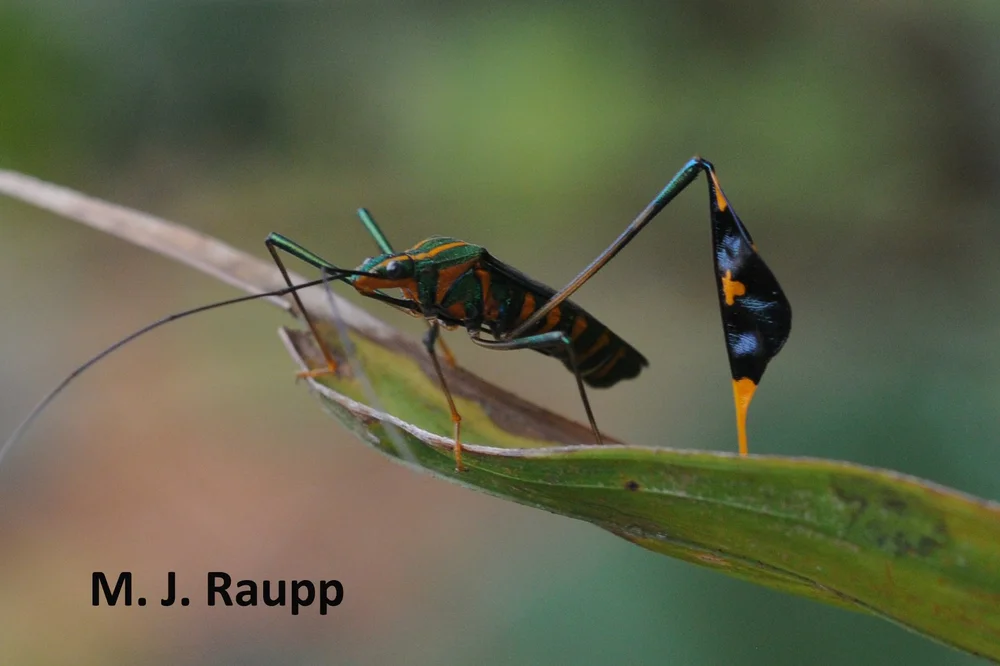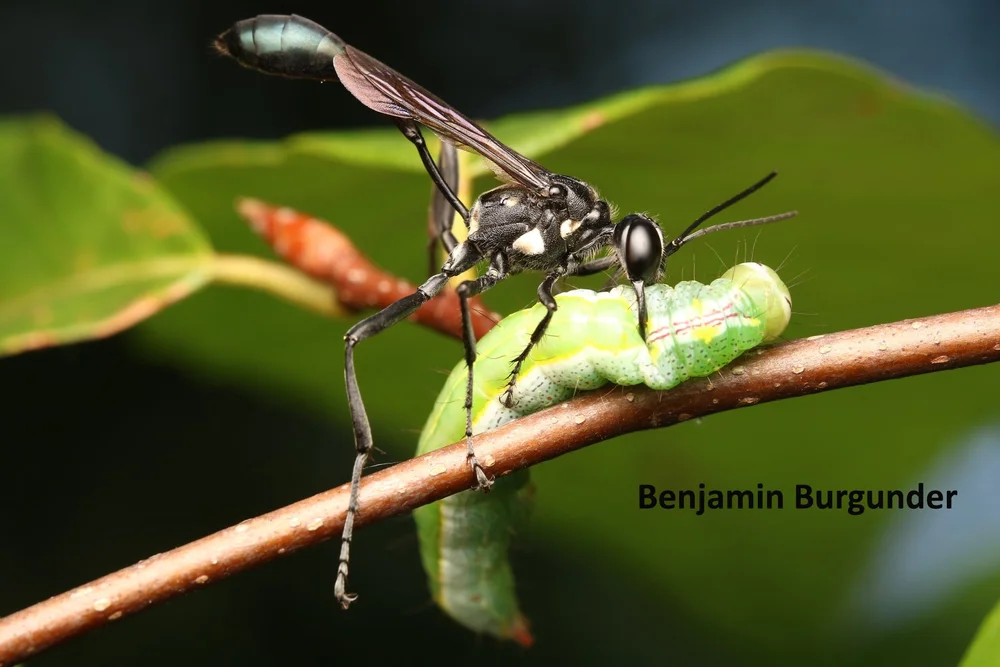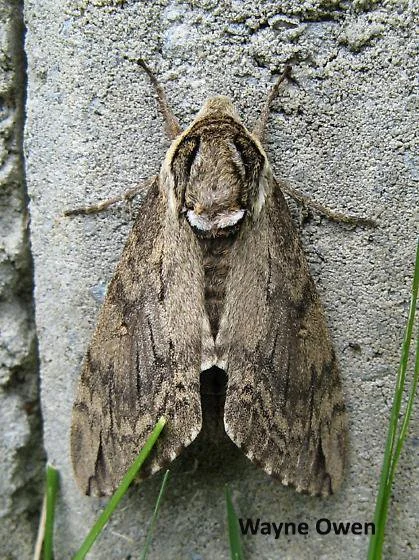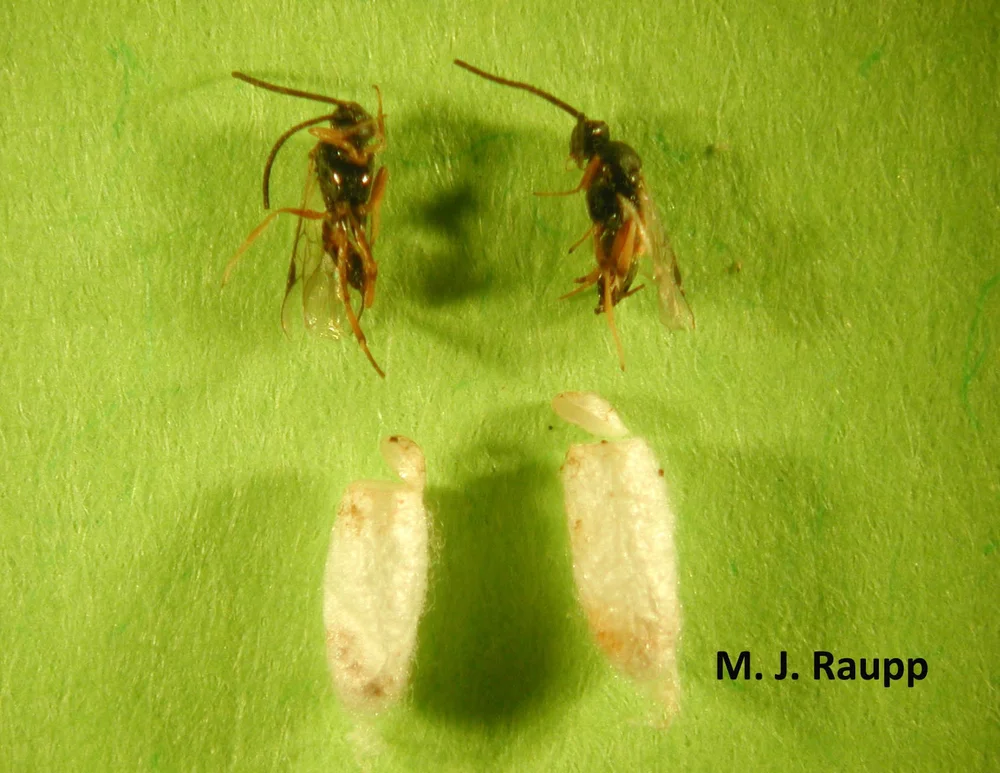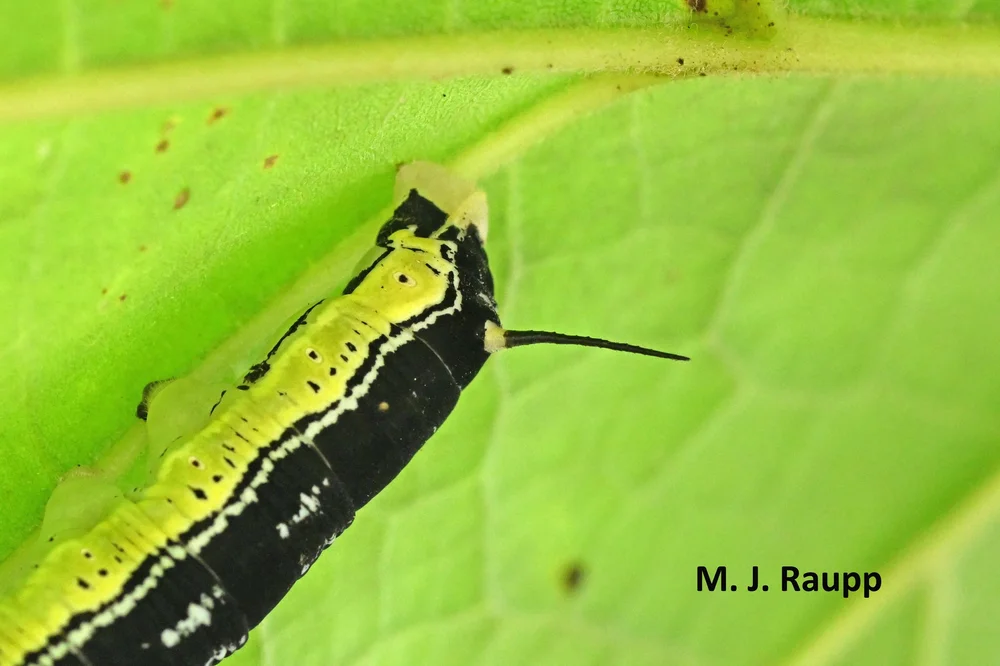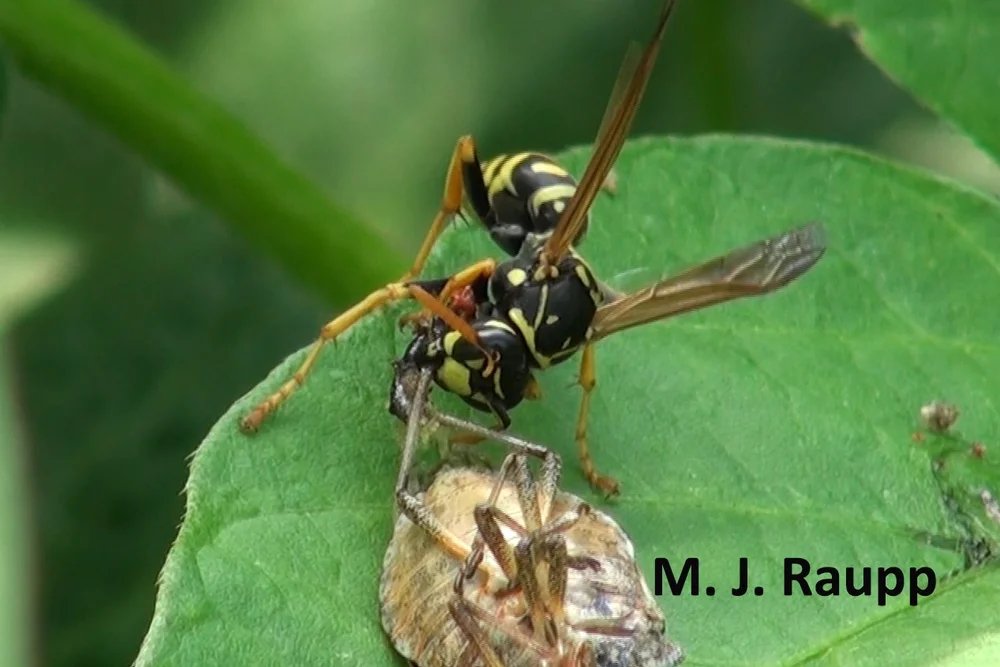Does a recent home invader also invade caves in the DMV? Greenhouse camel cricket, Tachycines asynamorus

Super long antennae and a saber-like ovipositor (egg-laying appendage) grace the front end and rear end, respectively, of a greenhouse camel cricket deep inside a Western Maryland cave.
Previous episodes of Bug of the Week featured invaders from Asia including Emerald Ash Borer, Brown Marmorated Stink Bug, Joró spider and Kudzu Bug. During this season of home invasions by the likes of spiders, lady beetles, and stink bugs, I have received lots of inquiries about creepy camel crickets showing up in basements and bathrooms. A decade ago, a fascinating study revealed that two species of Asian camel crickets, Tachycines asynamorus and Diestrammena japanica had bested our native camel crickets as rulers of residential man-caves and basement bedrooms. Researchers in North Carolina State University conducted a national survey and discovered that in places like Maryland, Virginia, and the District of Columbia, more than 90% of the camel crickets found in homes were Asian camel crickets.
Camel crickets in the genus Tachycines asynamorus, sometimes known as Diestrammena asynamorus, were first detected in the United States in a greenhouse in Minnesota in 1898 and dubbed the greenhouse camel cricket. Who would have guessed that in little more than a century they would become a dominant home invader? These dromedaries of the insect world are so named for their humpbacked appearance. Like their cousins, field crickets, camel crickets (a.k.a. cave crickets) have extraordinarily long hind legs and prodigious antennae. The antennae bear sense organs that enable camel crickets to detect food and avoid predators in dark, damp habitats such as the deep woodlands and caves in which they live. In a realm of perpetual darkness where eyesight is of little value, some cavernicolous species of camel crickets are blind.
Camel crickets consume decaying organic matter such as leaves, roots, and fruits. They also devour rotting remains of other insects, including their kin. In the human-built environment, when not invading dwellings, camel crickets are found in tool sheds, damp wood piles, beneath upturned wheelbarrows, or in cool dank spots such as a leafy redoubt behind a rubbish bin along the shaded, northern aspect of my foundation. In addition to engendering the “yuck” response, they are occasional pests because they nibble stored fabrics. In tool sheds their fecal remains stain wood and tools.
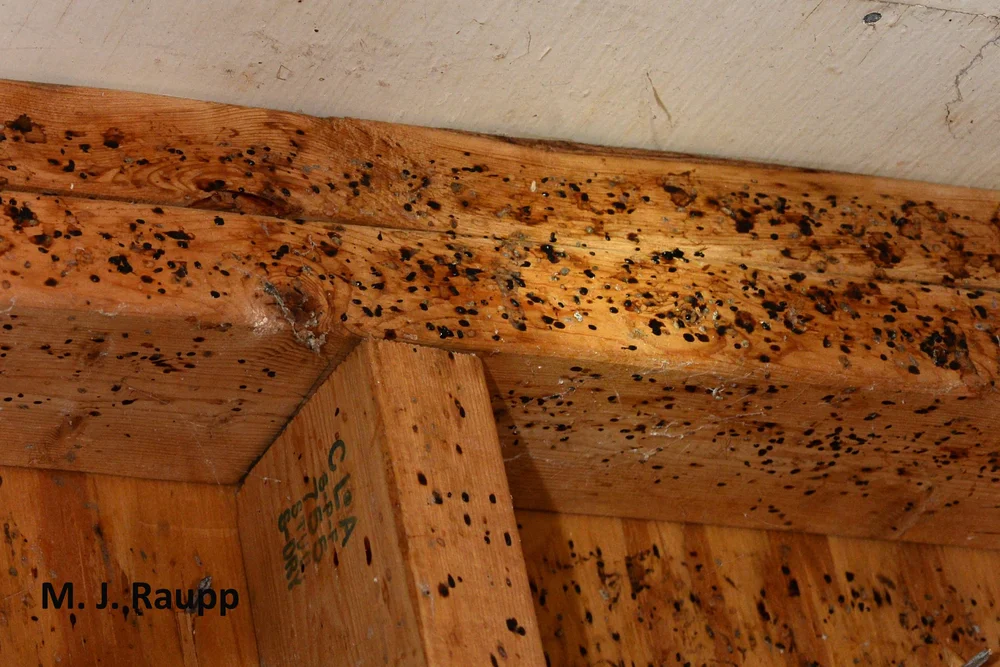
Fecal deposits left by herds of camel crickets foul the inside of human-made structures.
The study by scientists in North Carolina focused on camel crickets in and around homes. While exploring a cave in Western Maryland, I wondered if these Asian camel crickets had also invaded the natural, aboriginal habitats of our native North American camel cricket. A rather quick spelunking adventure inside the cave revealed dozens of greenhouse camel crickets hiding in crevices and galleries within the cave. We are currently researching the extent of these incursions in caves here in the DMV.
This time of year, I get lots of phone calls and emails about creepy camel crickets in people’s basements, bathrooms, and maybe even in the bathtub. Guess what? They didn’t evolve in your basement. They evolved in places just like this limestone cavern here in Western Maryland. Let’s go inside and see if we can find some camel crickets. About 100 feet in, I’m starting to see cave crickets. Inside this rocky crevice there’s a whole gaggle of crickets. Here is a big one and, like the ones in your home, she is a really good jumper. I wonder if these are non-native camel crickets or native ones. I guess to a camel cricket the dark interior of the tool shed looks a lot like a cave, because this tool shed has a lot of camel crickets inside. It’s fascinating that the camel crickets in my tool shed are the same species of non-native camel crickets that we found inside that natural cave in western Maryland.
What can you do about camel crickets in your home? Well, their annual home invasion begins in force late in summer and early autumn and they favor basements, garages, and crawl spaces with high humidity and low light levels. Camel crickets enter homes through portals including cracks in the foundation, voids around basement windows, spaces beneath doors, and holes where plumbing and electrical utilities exit and enter. Little crickets enter early in the season of siege and often go unnoticed, but as they scavenge food and grow, they become more apparent.
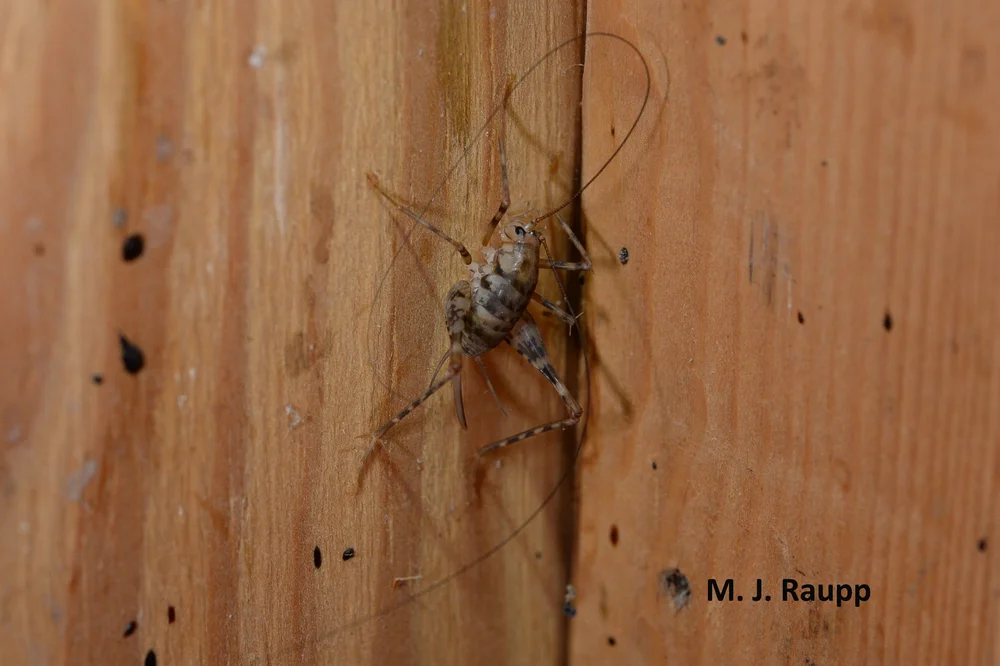
Greenhouse camel crickets like this one have invaded man-caves and tool sheds like mine in several states in the US. It is interesting that these crickets also invade natural caves in the DMV as well.
Here are some helpful tricks to keep these curious crickets out of your home. Remove wood piles and vegetation near the foundation of your home. These refuges are ideal sites for camel crickets to multiply and later enter your home. Caulk and seal all openings outdoors around the foundation. Replace and repair door sweeps and reduce levels of humidity in the basement. If you find crickets inside, you can capture them and place them outdoors. Or as one cricket aficionado noted, they make excellent fish bait. Fortunately, when wrangling these leapers, I have a long-handled insect net that gets the job done. If you are armed with a vacuum cleaner or jar, I wish you luck. Sticky traps such as those used for snaring roaches can be placed on the basement floor. I have found the corner junction of two walls to be a productive spot for catching crickets, as many species like to travel with a shoulder near a wall, a behavior known as thigmotaxis.
Though wingless, camel crickets have remarkable powers of locomotion. Long, powerful legs provide an uncanny ability to jump. Recently, as I chased one sartorial visitor around the bathtub, it easily cleared the edge of the tub – a leap ten times its own height. While this feat might seem trivial, in human terms this would be equivalent to me slam-dunking at a rim 60 feet above the court! In my dreams. With the reality of Asian camel crickets in the basement and Asian stink bugs in my attic, it only seems fitting to order some Chinese food for dinner tonight.
Acknowledgements
Thanks to Abby, Eliose, and Paula for providing the inspiration for this episode. The wonderful article “Too big to be noticed: cryptic invasion of Asian camel crickets in North American houses” by Mary Jane Epps, Holly L. Menninger, Nathan LaSala, and Robert R. Dunn was used as a reference for this story.
This post appeared first on Bug of the Week
